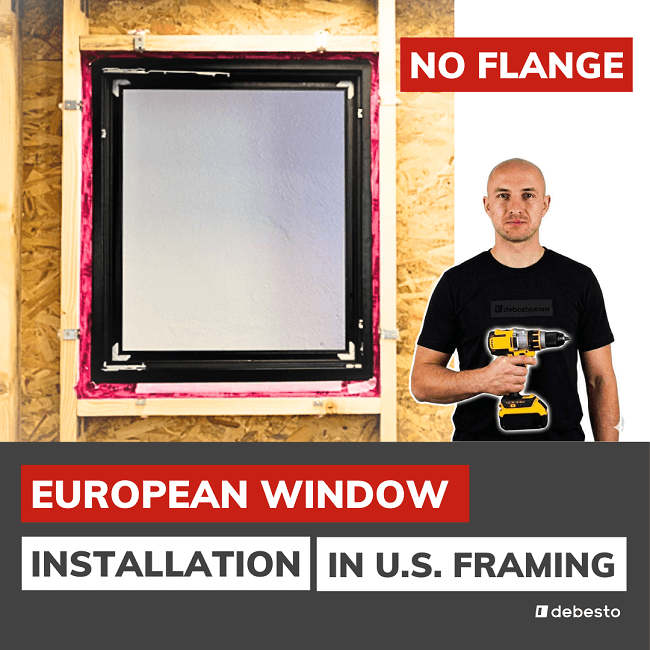How to Ensure Your European Windows Meet US Thermal Performance Requirements?

Thermal properties of windows and doors are crucial for the energy efficiency of buildings. The right choice of products can significantly reduce heating and cooling costs, as well as improve occupant comfort.
While NFRC certification is not always mandatory, it serves as a helpful benchmark for importing European windows to ensure compliance with US energy efficiency standards.
Read this article so you can ensure your project meets thermal performance requirements!
Table of content
- How did we come up with the question?
- Basic Thermal Properties of Windows and Doors
- Certifications and Standards
- Regional Differences and State Thermal Requirements for Windows in US
- How to Verify the Thermal Properties of Windows and Doors?
- Practical Examples of Energy Performance
How did we come up with the question?
We’ve had multiple private clients from the US reach out, asking to get educated about imported European windows. Throughout our consultative process, we realized how little they knew about the US thermal performance requirements, often having their opinion based on a specific quote they received on the local market. The specification sheets they receive often describe values like the U-factor or SHGC, but what’s more, they consider the values as legal requirements.
Circumstances we often face:
- A client provides us a quote from the local market stating different values, asking if we can meet them.
- We can easily meet or beat the values. The question is, should we?
- A client considers these values legally required, asking us to make ours even.
- We’re not really able to make them exactly the same, since the values are calculated for each construction individually. Still, the question remains. Should we?
- A client approaches us asking for specific values they heard of, sometimes based on their architect’s or General Contractor’s opinion.
- This is often a good lead, although they might be sharing values which were not necessarily double-checked with the right entity.

Basic Thermal Properties of Windows and Doors
- U-Value – Measures how well a window insulates heat. The lower the value, the better the insulation.
- Solar Heat Gain Coefficient (SHGC) – Measures how much solar radiation passes through the window. Important for regulating indoor temperature.
- Air Leakage (AL) – Indicates the amount of air that passes through the window. Lower leakage means better airtightness.
- Sound Transmission Class (STC) – Indicates the window’s ability to reduce noise from outside. Higher STC means better sound insulation.
If you are interested in more specific explanation of thermal properties, read our article about differences between US and EU specifications!

Certifications and Standards
NFRC Certification (National Fenestration Rating Council) provides independent evaluations of thermal and other performance characteristics of windows and doors. Other important certifications include ENERGY STAR and CE, which also indicate high quality and energy efficiency.

Regional Differences and State Thermal Requirements for Windows in US
Different states in the USA may have varying regulations regarding the thermal properties of windows and doors. For instance, California has stricter energy efficiency requirements, while Florida places more emphasis on hurricane resistance. Customers should check local building codes to ensure selected products meet all requirements.
Here’s an article you might find handy:
Building Codes by State – this resource offers a detailed overview of building codes for each state, including links to relevant state government websites where the latest building codes can be accessed. It covers a wide range of building aspects, including window specifications.

How to Verify the Thermal Properties of Windows and Doors?
The best sources of information are manufacturer websites and technical documentation, as well as debesto’s website. NFRC labels provide key information that can be easily compared. It is also beneficial to use online tools, such as energy calculators, to assess the energy efficiency of a building after installing new windows or doors.
Practical Examples of Energy Performance
For example, in a cold climate, it is important to choose windows with a low U-Factor to minimize heat loss.
In a hot climate, a low SHGC is crucial to prevent overheating.
Selecting the the right parameters can significantly improve both comfort and energy efficiency of the building.

Summary
As a person responsible for windows used in project, you should pay special attention to certifications and thermal properties of windows and doors. Checking local regulations and using available analysis tools will help make the best choice.
Remember, whenever not certain, reach out to your local Building Council in order to receive the most recent and feasible requirements.
FAQ
- Is NFRC certification mandatory?
It depends on where you’re located. Generally speaking, not always, but it is very helpful in assessing the quality of windows and doors.
- What thermal properties are most important?
U-Factor and Solar Heat Gain Coefficient (SHGC) are the key parameters.
- Where can I find information about the thermal properties of products?
On manufacturer websites and in product technical documentation. If you would like to be absolutely sure, our job is to find best solution which meets all of your requirements.

Not sure if European windows will meet project requirements?
You own a window project, but have doubts whether European windows are going to meet your expectations? Book a free video consultation!
Book a project consultation






